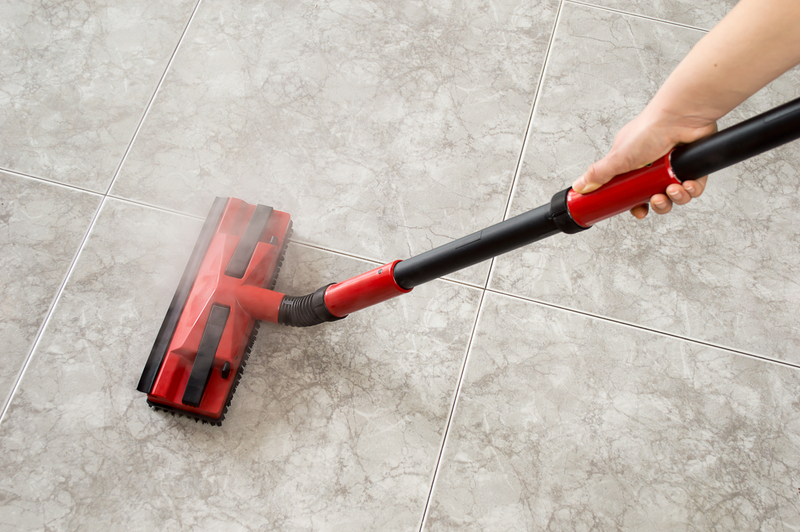Tackle Window Sill Mould with These Effective Cleaning Hacks
Posted on 16/06/2025
Tackle Window Sill Mould with These Effective Cleaning Hacks
Are mouldy window sills causing headaches in your home? Unsightly black spots, musty odours, and even health problems can arise when mould grows on and around window frames. Don't let window sill mould take hold! In this comprehensive guide, we'll share proven cleaning tricks, prevention strategies, and safe practices so you can banish that mould for good. Discover how to reclaim the beauty of your home and safeguard your family's health with these effective window sill mould cleaning hacks.
Understanding the Problem: What Causes Window Sill Mould?
Mould thrives in damp, poorly ventilated places--making window sills a common culprit. Water condensation from temperature differences, leaks, or high humidity often collects on window frames and sills, providing the perfect breeding ground for mould spores.
- Condensation: Warm indoor air meets cold glass, causing water to collect on sills and frames.
- Poor ventilation: Humid air gets trapped, amplifying moisture build-up.
- Leaks: Failing window seals or cracks let rainwater infiltrate, saturating wood or plaster.
- Lack of cleaning: Dust and organic debris feed mould growth if left unchecked.
Whether you're dealing with wooden frames, uPVC, aluminium, or painted surfaces, the mould on your window sill requires prompt attention. Not only does it look unsightly, but exposure to mould spores can trigger allergies, respiratory issues, and damage home materials.

Is Window Sill Mould Dangerous?
Mould isn't just a visual problem; it poses potential health risks. Inhaling mould spores can exacerbate asthma, allergies, and even lead to chronic respiratory illnesses.
- Sensitive groups: Children, the elderly, and people with weakened immune systems are most vulnerable.
- Symptoms: Sneezing, itchy eyes, coughing, skin irritation, and headaches.
- Long-term damage: Persistent exposure may result in chronic health conditions and costly structural repairs.
That's why tackling window sill mould quickly and thoroughly is essential for every household.
Essential Supplies for Cleaning Mould from Window Sills
Before you start, gather these tools and supplies to ensure safe and effective removal of window sill mould:
- Protective gloves
- Safety goggles
- Mask (N95 or higher)
- Old towels or disposable cloths
- Spray bottle
- Soft scrubbing brush or sponge
- Bucket of clean water
- Absorbent paper towels
- Vacuum with HEPA filter (optional for initial dry cleaning)
Avoid dry brushing or vacuuming large mould patches without a HEPA filter, as this can release spores into the air.
Natural Cleaning Solutions for Window Sill Mould
Looking for effective, non-toxic window sill mould cleaning hacks? Here are highly recommended home solutions:
1. Vinegar Solution: An Eco-Friendly Mould Buster
- Mix equal parts white vinegar and water in a spray bottle.
- Spray generously onto the affected area.
- Allow to sit for 1 hour to let the acetic acid break down the mould.
- Scrub with a soft brush, then wipe clean with a damp cloth.
- Repeat if necessary. Vinegar kills up to 82% of mould species and is safe on most surfaces.
2. Baking Soda Paste: Gentle Yet Powerful
- Mix one tablespoon of baking soda with a few drops of water (to form a paste).
- Apply the paste to stubborn spots of mould on window sills.
- Let it rest for 15-30 minutes, then scrub softly.
- Rinse off with clean water or vinegar solution for extra effectiveness.
- Baking soda deodorizes as it cleans, eliminating musty smells!
3. Hydrogen Peroxide: For Stubborn Mould
- Use 3% hydrogen peroxide in a spray bottle--no dilution needed.
- Spray onto visible mould on your window sill until well saturated.
- Wait 10-15 minutes for the bubbling to work through the stain.
- Scrub and wipe down. Rinse thoroughly with water.
- Note: Test on coloured surfaces first, as it may bleach paint or fabric.
4. Tea Tree Oil Spray: Natural Anti-Fungal Power
- Combine 1 teaspoon of tea tree oil with 1 cup of water in a spray bottle.
- Shake well and spray directly onto your window sill mould patches.
- Wait several hours (do not rinse for maximum effect).
- Wipe the surface with a clean, dry cloth.
For all cleaning methods, always ensure the area is well-ventilated.
Heavy-Duty Cleaning: Tackling Severe Window Sill Mould
If your window sill mould covers a large area or has penetrated deep into wood or plaster, a more robust approach may be needed:
- Bleach Solution (for non-porous, colourfast surfaces):
- Mix 1 part bleach to 10 parts water.
- Apply with a sponge, let sit for 10-15 minutes, then rinse thoroughly.
- Warning: Bleach fumes can be harsh--use only with strong ventilation and never mix with ammonia.
- Mould-specific cleaners: Available in hardware stores for persistent infestations; always follow manufacturer's instructions.
- Remove and replace: Severely mould-damaged wood, sealant, or plaster may need to be replaced to prevent regrowth.
Step-By-Step Window Sill Mould Cleaning Process
- Prepare the Area:
- Open windows to ventilate.
- Wear gloves, mask, and goggles for safety.
- Place old towels below the window to catch drips and debris.
- Initial Dry Cleaning (Optional):
- If the mould is dry and surface-level, lightly vacuum with a HEPA filter to remove loose spores.
- Spray Cleaning Solution:
- Generously apply your chosen mould cleaner (vinegar, baking soda, peroxide, or tea tree oil).
- Allow it to sit for the recommended time to break down the mould.
- Scrub Gently:
- Use a soft-bristled brush, sponge, or toothbrush for detail cleaning around grooves and corners.
- Rinse and Dry:
- Wipe the area with a damp cloth, then pat dry with disposable towels.
- Leave the window open to encourage rapid drying and prevent regrowth.
- Dispose of materials:
- Throw away used towels and gloves to avoid spreading spores elsewhere in your home.
Preventing Window Sill Mould: Maintenance and Tips
The best way to conquer mould on your window sill is to stop it before it starts! Here are smart prevention hacks to keep sills mould-free:
1. Improve Ventilation
- Open windows regularly to exchange humid indoor air with fresh outdoor air.
- Install trickle vents or use extractor fans in problem areas like kitchens and bathrooms.
- Move furniture slightly away from windows to improve air flow.
2. Manage Moisture and Condensation
- Wipe down sills and frames every morning during cold months when condensation is common.
- Use dehumidifiers in high-humidity zones.
- Dry laundry outdoors whenever possible--indoor drying increases humidity.
3. Repair and Seal Windows
- Check for cracks or gaps in window seals and repair promptly.
- Repaint or reseal wooden sills to provide a moisture barrier.
- Upgrade to double glazing where feasible for improved insulation.
4. Regular Cleaning and Inspection
- Dust and clean window sills at least once a month, especially in damp weather.
- Inspect for leaks or mould after heavy rain.
- Remove dead insects or plant debris that can attract mould.
Pro Tip: If you spot a small patch of mould, tackle it immediately--don't wait for it to spread!
When to Call a Professional
Sometimes, DIY cleaning hacks are not enough to tackle severe window sill mould infestations. Consider professional help if:
- Large areas (over 1 square meter) are affected.
- Mould keeps returning despite cleaning and prevention.
- The window frame, sill, or surrounding wall is visibly rotten or structurally compromised.
- You or your family experience unexplained ongoing health issues.
Mould remediation experts have specialized equipment and knowledge to safely address deep, persistent mould problems, ensuring your windows and home stay healthy and intact.

Frequently Asked Questions about Window Sill Mould
Is black mould on window sills toxic?
While not all black mould on window sills is toxic, it can still trigger allergic reactions and respiratory problems. Certain species, like Stachybotrys chartarum, are considered toxic. Always use precautions when cleaning, and seek professional advice if in doubt.
Can I use bleach to remove window sill mould?
Bleach is effective on non-porous surfaces, but it may not penetrate porous materials like wood, sometimes only bleaching the stain without killing underlying roots. Natural alternatives such as vinegar and hydrogen peroxide are often safer and just as effective, especially for regular maintenance.
Why does mould keep coming back on my window sills?
Recurring mould means the source of moisture isn't addressed--this could be persistent condensation, leaks, or inadequate ventilation. Make sure to fix any underlying issues, keep the area dry, and use preventative coatings or sealants if necessary.
Will a dehumidifier help reduce window sill mould?
Yes, a dehumidifier in problem rooms (like bedrooms or bathrooms) will help remove excess moisture from the air, making conditions less hospitable for mould growth on your window sills and surrounding walls.
Should I repaint a mouldy window sill?
Only after thorough cleaning, drying, and applying a mould-resistant primer. Painting over active mould traps spores beneath and can worsen the problem in the long run.
Conclusion: Win the Fight Against Window Sill Mould!
With these proven window sill mould cleaning hacks, you can restore your windows to their former glory and create a safer, healthier home. Whether you prefer natural solutions or heavy-duty cleaners, acting quickly and consistently ensures mould won't stand a chance.
- Identify the cause--moisture is the enemy!
- Use gentle, effective mould removers for safe cleaning.
- Establish good habits to prevent future problems.
- Don't hesitate to seek help when needed.
Tackle window sill mould today and enjoy sparkling clean, healthy living spaces all year round. With these effective cleaning hacks and prevention tips, you can say goodbye to ugly, unhealthy mould--forever!




